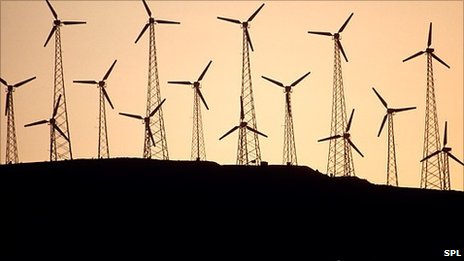Katia Moskvitch
BBC News
5 October 2010
Wind farms, especially big ones, generate turbulence that can significantly alter air temperatures near the ground, say researchers.
As turbines often stand on agricultural land, these changes could in turn affect crop productivity.
In the journal Proceedings of the National Academy of Sciences (PNAS), the team says the impact could be reduced by changing rotor design.
Another option would be to site farms in areas with high natural turbulence.
The world’s very first wind farm was set up in southern New Hampshire, US, in 1980.
Almost a decade later, in 1989, a meteorological field study conducted on a wind farm in San Gorgonio, California, gathered temperature data over a period of almost two months.
This data formed the basis of the current study.
The team, led by Somnath Baidya Roy from the University of Illinois, analysed the information – seemingly, “the only meteorological field campaign conducted in an operational wind farm”.
The scientists also conducted multiple computer simulations of a wind farm using a climate model called RAMS (Regional Atmospheric Modeling System).
The research showed that, depending on the natural air conditions, mixing the air with a turbine’s rotor would either result in a warming or a cooling near the surface.
“This turbulence leads to a warming near the surface at night and a cooling during the day,” Dr Roy told BBC News.
He added that the effects were in the range of ‐0.4 to 1.5C.
Read the rest at BBC News.









